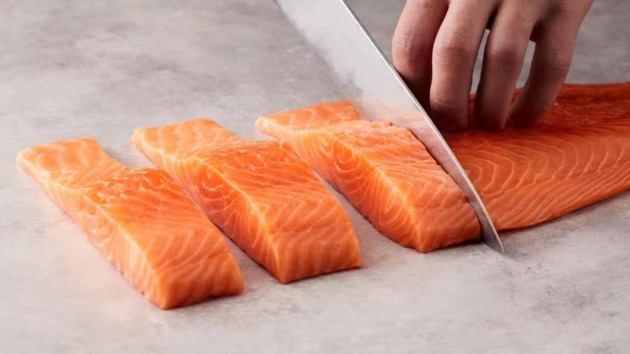
Photo/WeChat of Norwegian Seafood Council
Since the beginning of 2023, the import price of salmon in China has been rising continuously. In the first quarter, the export price of Norwegian fresh-frozen salmon rose to a record price of 148 Norwegian kroner per kilogram, which was 23 Norwegian kroner higher than in the second quarter of 2022.
On April 13th, NBD had a dialogue with Andreas Thorud who joined the Norwegian Seafood Council a year and a half ago and now serves as General Manager for Mainland China and Hong Kong Administrative Region.
NBD: According to the 2022 report released by the Norwegian Seafood Council, among many seafood exports, only salmon showed a phenomenon of decreasing volume and increasing price. From the supply side, what caused the decrease in salmon exports?
Tong Anrui: This is mainly due to the limited supply of salmon resulting in a reduction in export volume. But demand remains strong, so prices have risen rapidly. In 2022, Norwegian salmon exports exceeded 2.86 billion Norwegian kroner, an increase of 50% year-on-year. In fact, in the first quarter of 2023, Norway’s seafood exports to China set new records in terms of both volume and price. The overall export value increased by 18% year-on-year to reach 2.2 billion Norwegian kroner, making China the sixth largest market for Norwegian seafood exports. The export volume of fresh-frozen whole salmon to China increased by 42%, and the export value increased by 80%.
NBD: As the two major salmon-producing countries in the world, will Norway's tightening resource tax policy affect future supply and prices?
Andreas Thorud: The resource tax has not yet been passed by Norway's parliament. It will not affect the production of an industry because companies will still breed fish. Once the policy is passed, it will only affect the financial performance (such as cash flow and future capital investment plans) of companies engaged in seafood farming in Norway.
NBD: What is the fastest-growing seafood product in Norway's seafood category in China? What is the trend of Norwegian seafood consumption in China?
Andreas Thorud: Salmon is still growing the fastest this year. We will promote four types of fish in China, including salmon, mackerel, Arctic cod and shrimp/crab/bivalves. You can see that they all have double-digit growth.
NBD: How do you plan to develop China's consumer market for Norwegian seafood? How do you increase Chinese consumers' recognition of Norwegian seafood?
Andreas Thorud: Now, the development of Norwegian seafood in China has reached a stage of diversified channels. Not only can you eat Norwegian seafood in restaurants but you can also buy fresh-frozen food through retail channels. We will also promote the value and scene of Norwegian seafood products through social media and other channels to bring cooking inspiration to consumers. For example, the Norwegian Seafood Council has opened an official account on Xiaohongshu (Little Red Book), and the number of fans on WeChat video accounts continues to grow. The interaction between food KOLs and fans has also increased. Through these channels, we hope to bring consumers closer to their place of origin and feel the deliciousness and cooking fun of ingredients. Offline, we have created a special menu for Norwegian seafood with Shanghai Disney Resort and have also cooperated with Sam's Club and Hema on the retail end. In terms of the industry side, we mainly participate in industry exhibitions and CIIE (China International Import Expo) to enhance enterprise communication.


 川公网安备 51019002001991号
川公网安备 51019002001991号





